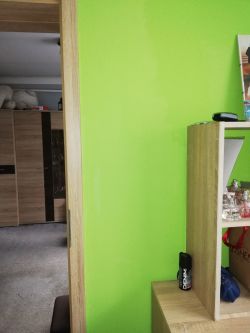FAQ
TL;DR: Move a light switch with 0 extra wires using two‑wire wireless receivers — "receivers that do not require an additional neutral wire" — installed in series with the lamp; pair a stick‑on wall switch or remote. For renters and renovators. [Elektroda, bubu1769, post #18243957]
Why it matters: You avoid wall chasing, keep existing cabling, and place switches anywhere.
- Two‑wire receivers: 0 neutral conductors needed at the switch; install in series with the lamp. [Elektroda, bubu1769, post #18243957]
- Many switch boxes lack neutral; plan for lamp or junction‑box placement if needed. [Elektroda, stanislaw1954, post #18243949]
- Tight box? Mount the receiver at the lamp canopy to gain space. [Elektroda, bubu1769, post #18243968]
- Batteryless stick‑on wall switches exist; no batteries to replace. [Elektroda, bubu1769, post #18243709]
- Example spec: 230 V remote‑switch kits reported working in practice. [Elektroda, adamko, post #18247125]
Quick Facts
- Two‑wire receivers: 0 neutral conductors needed at the switch; install in series with the lamp. [Elektroda, bubu1769, post #18243957]
- Many switch boxes lack neutral; plan for lamp or junction‑box placement if needed. [Elektroda, stanislaw1954, post #18243949]
- Tight box? Mount the receiver at the lamp canopy to gain space. [Elektroda, bubu1769, post #18243968]
- Batteryless stick‑on wall switches exist; no batteries to replace. [Elektroda, bubu1769, post #18243709]
- Example spec: 230 V remote‑switch kits reported working in practice. [Elektroda, adamko, post #18247125]
How can I move a light switch without pulling new wires?
Install a two‑wire wireless receiver in series with the lamp and add a wall transmitter. These modules “do not require an additional neutral wire” at the switch. They operate with the existing two conductors between switch and lamp. Place the transmitter wherever you want. [Elektroda, bubu1769, post #18243957]
Do I need a neutral wire in the switch box?
Many in‑wall receivers need a neutral. “There you need a neutral wire,” and many switch boxes lack it. Without neutral at the switch, those modules cannot be installed there. Choose no‑neutral designs or place control elsewhere in the circuit. [Elektroda, stanislaw1954, post #18243949]
Where do I put the receiver if there’s no space behind the switch?
Mount the receiver at the lamp when the box is shallow or crowded. Many compact receivers fit inside a luminaire canopy. This avoids carving walls and keeps the original cabling intact. Pair it with your preferred wall transmitter. [Elektroda, bubu1769, post #18243968]
What’s a simple kit to start with?
Use matched parts from one series. Example: ORNO OR‑SH‑1710 wall switch with OR‑SH‑1705 or OR‑SH‑1704 in‑box receivers. They provide basic wireless on/off control without new wiring. You can expand with brand‑compatible accessories later. [Elektroda, Anonymous, post #18243710]
Are batteryless, stick‑on wall switches an option?
Yes. Batteryless wireless switches (e.g., LINBEL) pair with a receiver and harvest energy from the press. You avoid battery changes and can mount them anywhere with adhesive. This is ideal for rented spaces. [Elektroda, bubu1769, post #18243709]
Can I add a handheld remote control?
Yes. The ORNO lineup includes a 2‑channel handheld remote that pairs with their receivers. Control two circuits or scenes from one fob. Wall‑mount the holder if you prefer a fixed location. [Elektroda, Anonymous, post #18243710]
How do I handle junctionless vs. junction‑box wiring?
Identify where neutral is available. In junctionless wiring, “zero is in the switch box in the form of a loop.” With junction boxes, neutral is in the box and connections belong there. Select products to match your topology. [Elektroda, Anonymous, post #18243962]
Quick 3‑step: How do I add a no‑neutral receiver at the lamp?
- Turn the existing wall switch ON permanently.
- Install the wireless receiver in the lamp fitting or canopy.
- Pair your new wall transmitter or remote per the manual.
“Turn the current switch to the on position and you have phase and neutral in the lamp.” [Elektroda, ak44, post #18247776]
Can I avoid in‑wall work entirely?
Yes. Swap in smart bulbs controlled by a remote, like OSRAM LED STAR+. Stick the remote to the wall and treat it like a switch. No changes to fixed wiring are needed. [Elektroda, riddyk, post #18245219]
Does this work on 230 V mains?
Yes. A user installed a 230 V remote‑switch kit (Elektro‑Remote 230V) and reported success. Choose a kit rated for your mains voltage and follow the manual. [Elektroda, adamko, post #18247125]
Should I leave the old switch ON after adding wireless control?
Yes. Set the legacy switch to ON to feed the lamp and receiver continuously. “Turn the current switch to the on position and you have phase and neutral in the lamp.” This avoids accidental module power cuts. [Elektroda, ak44, post #18247776]
Will two‑wire receivers cause LED flicker, and how do I fix it?
Some low‑wattage LED loads can flicker or glow with no‑neutral modules. Many vendors recommend a small “bypass” across the lamp to stabilize current. Example: Shelly 1L specifies using the Shelly Bypass for low loads. Add the bypass if your LEDs misbehave. [“Shelly 1L - User Guide”]







